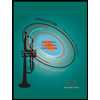A work team is looking at a current product in the LUML catalog --- the L555X fixture. The L555X was introduced about 2 years ago; is a pretty good seller; seems to meet customer needs (virtually no complaints and few returns); and should be in production for several more years. No major changes in capability are planned. However, LUML is interested in improving the profits from the product. Marketing opines that the L555X is fairly priced given the competition and L555X’s capabilities. One option to try to increase profits is to raise the price (revenue) while holding the production expenses constant. Marketing believes that the L555X has a typical demand curve; and an increase in price will lead to a decrease in sales volume and lower overall revenue. On January 13, the team analyzed the current design and identified 63 parts in the L555X. On January 27 and 28, the team met with the industrial engineering department. Together they were able to identify 108 interfaces in the L555X. The Engineering Department went-back-to-the-drawing-board (or CAD terminal as appropriate). They looked at the L555X in a slightly different light. No pun intended. At the next meeting on February 10, the engineers said that they were confident that they had found a way to reduce the number of parts to 50; and the number of interfaces to 94. The customer will see little if any change in the appearance, nor any reduction in the capabilities. This second option will hold revenue constant and reduce costs. Hence greater profit with the same sales levels. Engineering proposes that LMUL redesign the L555X to this revised configuration. Question #1. What “program” or approach does this scenario seem to be following and applying? Explain. Question #2. Give a quantitative assessment of the proposal on the number of parts and interfaces. Be sure to include your assessment of whether this change would be “good”; “bad”; “no real change”; or however you care to characterize the proposal. Be sure to include your work and an explanation. Question #3. Give a qualitative assessment of the proposal. Be sure to include your assessment of whether this is “good”; “bad”; “no real change”; or however you care to characterize the proposal. Be sure to include an explanation. Question #4. Given our general relationship Productivity = outputs/inputs How might we expect DFMA to change productivity? How might we expect DFMA to change efficiency? How might we expect DFMA to change effectiveness? Question #5. Apply the Younker article to this use of a team. Question #6. How might we apply the “ideas generation” approach to this project? Include THREE of the techniques mentioned in the article or located in the “motherlode”. [You can use all or some of the techniques explained in some detail in the first sections of the article.] For each technique give: ** The name of the technique. ** A one or two sentence description of the technique. ** A short explanation applying the technique to this case/scenario. A table or similar might be more reader friendly than a longer narrative!
A work team is looking at a current product in the LUML catalog --- the L555X fixture. The
L555X was introduced about 2 years ago; is a pretty good seller; seems to meet customer
needs (virtually no complaints and few returns); and should be in production for several more
years. No major changes in capability are planned. However, LUML is interested in improving the profits from the product. Marketing opines that the L555X is fairly priced given the competition and L555X’s capabilities. One option to try to increase profits is to raise the price (revenue) while holding the production expenses constant. Marketing believes that the L555X has a typical demand curve; and an increase in price will lead to a decrease in sales volume and lower overall
revenue. On January 13, the team analyzed the current design and identified 63 parts in the L555X.
On January 27 and 28, the team met with the industrial engineering department. Together
they were able to identify 108 interfaces in the L555X. The Engineering Department went-back-to-the-drawing-board (or CAD terminal as appropriate). They looked at the L555X in a slightly different light. No pun intended. At the next meeting on February 10, the engineers said that they were confident that they had found a way to reduce the number of parts to 50; and the number of interfaces to 94. The customer will see little if any change in the appearance, nor any reduction in the capabilities. This second option will hold revenue constant and reduce costs. Hence greater profit with the same sales levels. Engineering proposes that LMUL redesign the L555X to this revised configuration.
Question #1. What “program” or approach does this scenario seem to be
following and applying? Explain.
Question #2. Give a quantitative assessment of the proposal on the number of
parts and interfaces. Be sure to include your assessment of whether this change would be
“good”; “bad”; “no real change”; or however you care to characterize the proposal. Be sure to
include your work and an explanation.
Question #3. Give a qualitative assessment of the proposal. Be sure to include
your assessment of whether this is “good”; “bad”; “no real change”; or however you care to
characterize the proposal. Be sure to include an explanation.
Question #4. Given our general relationship
Productivity = outputs/inputs
How might we expect DFMA to change productivity?
How might we expect DFMA to change efficiency?
How might we expect DFMA to change effectiveness?
Question #5. Apply the Younker article to this use of a team.
Question #6. How might we apply the “ideas generation” approach to this
project? Include THREE of the techniques mentioned in the article or located in the
“motherlode”. [You can use all or some of the techniques explained in some detail in the first
sections of the article.]
For each technique give:
** The name of the technique.
** A one or two sentence description of the technique.
** A short explanation applying the technique to this case/scenario.
A table or similar might be more reader friendly than a longer narrative!
Step by step
Solved in 5 steps









